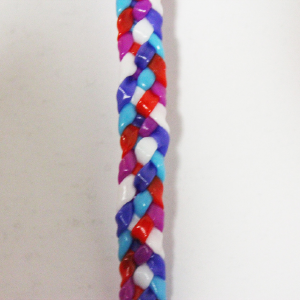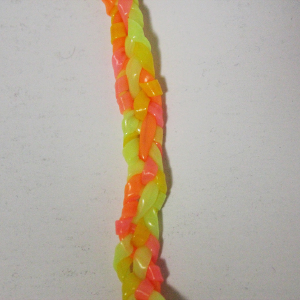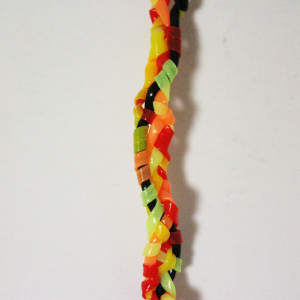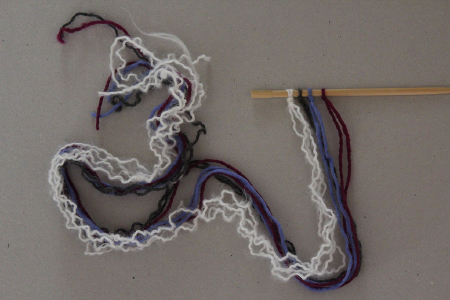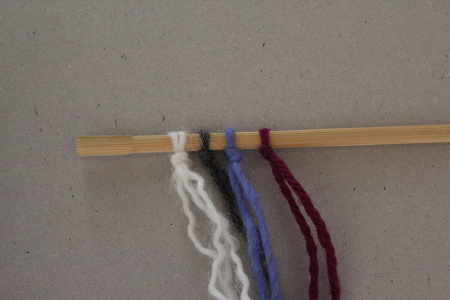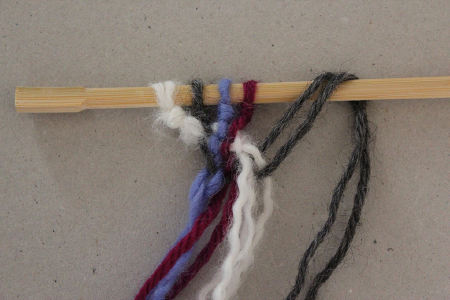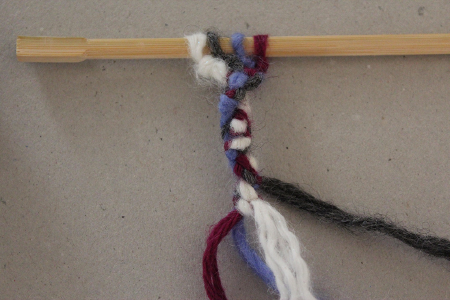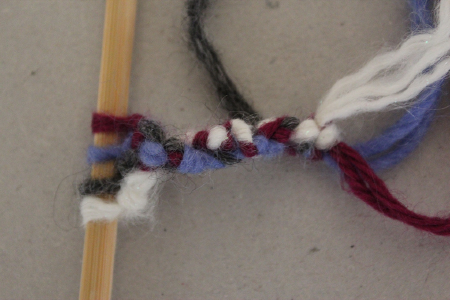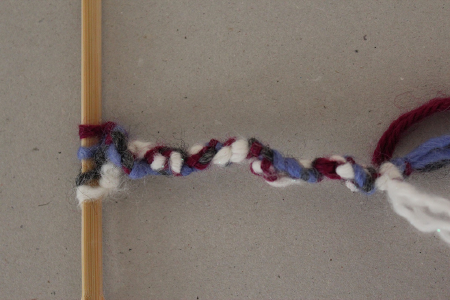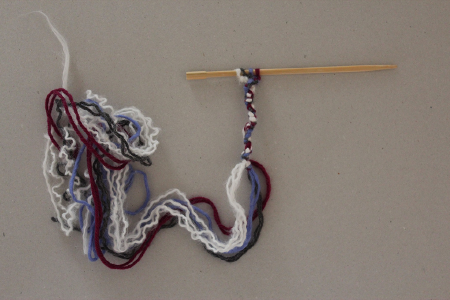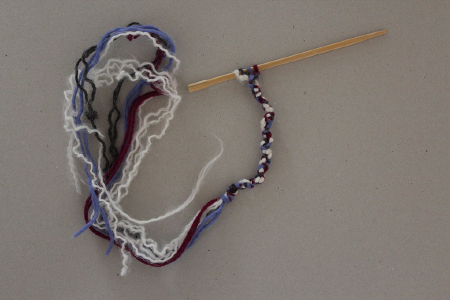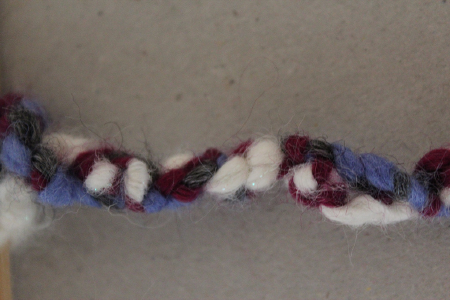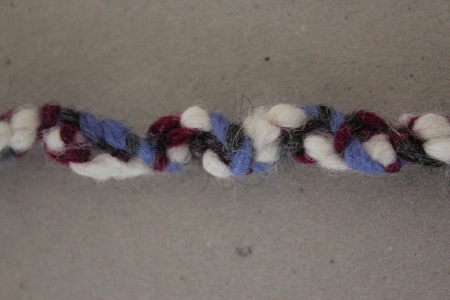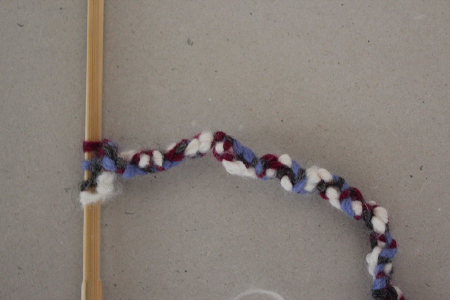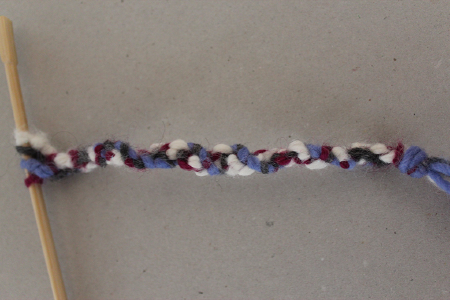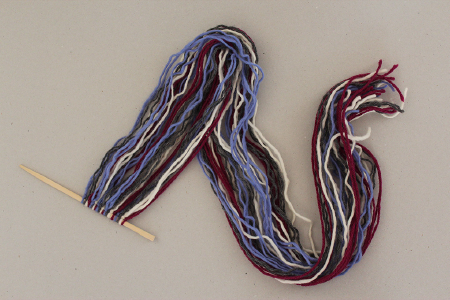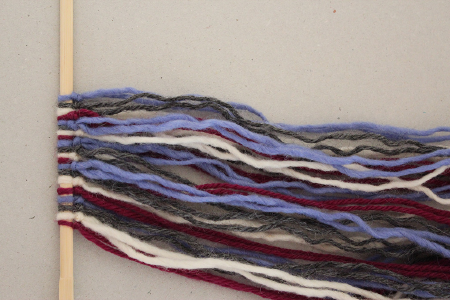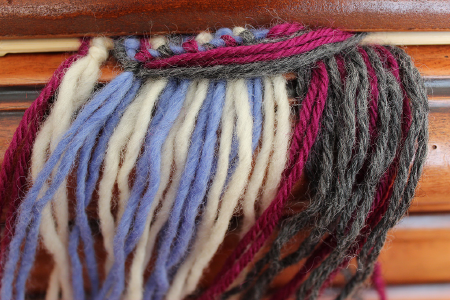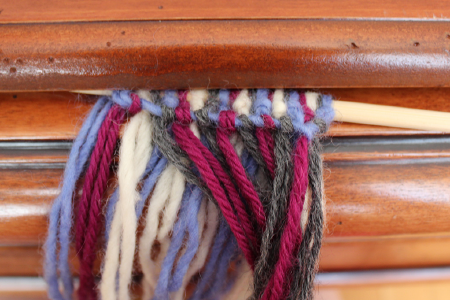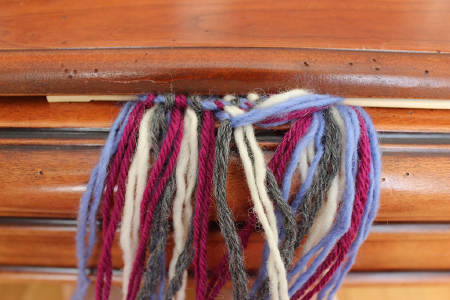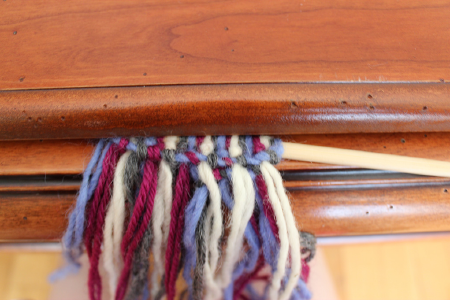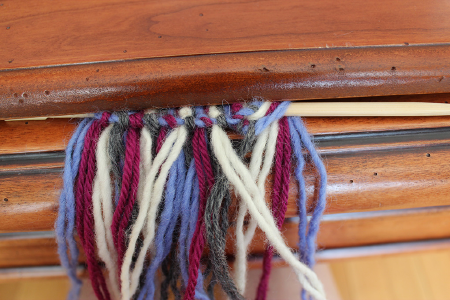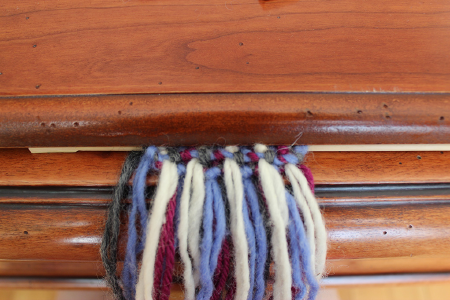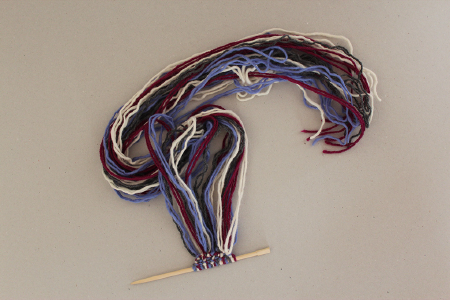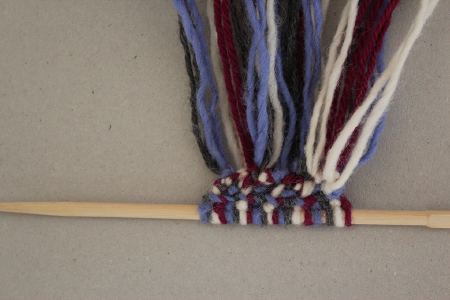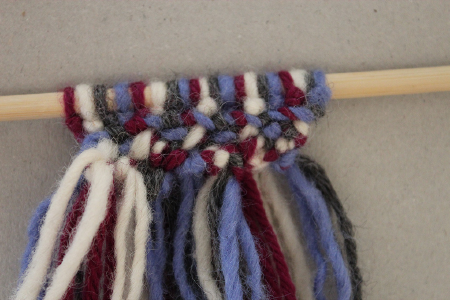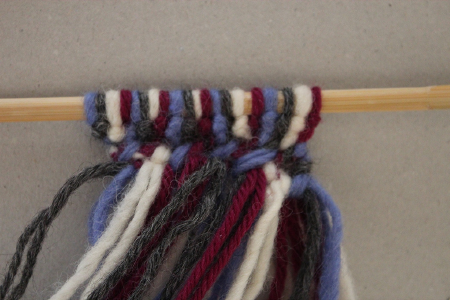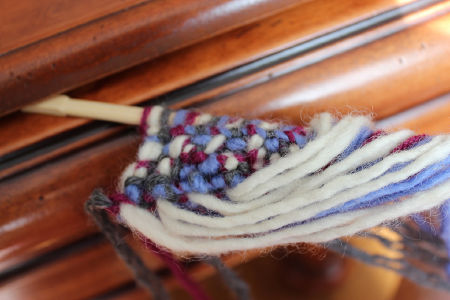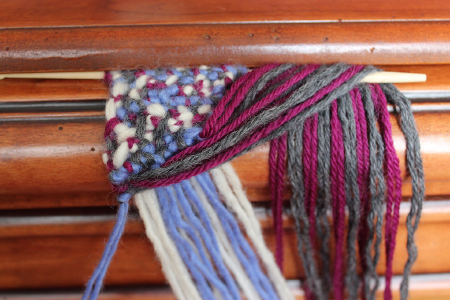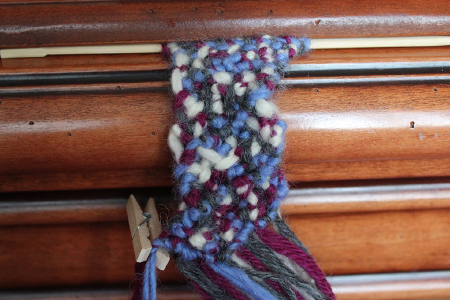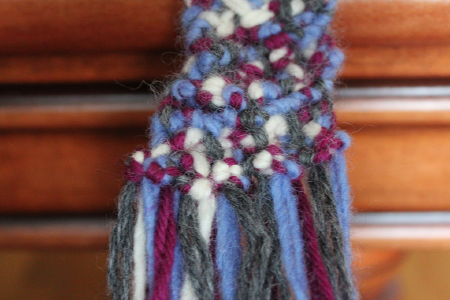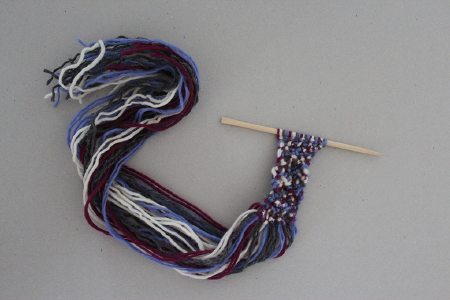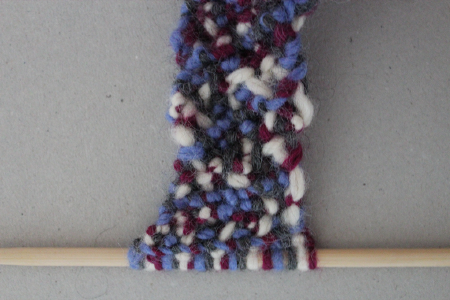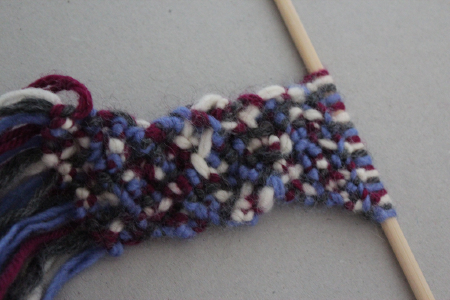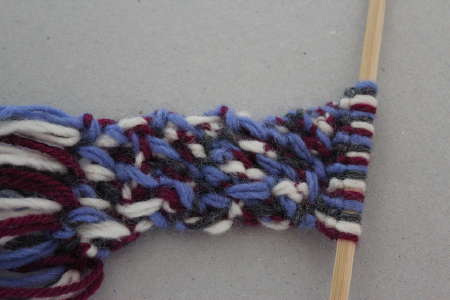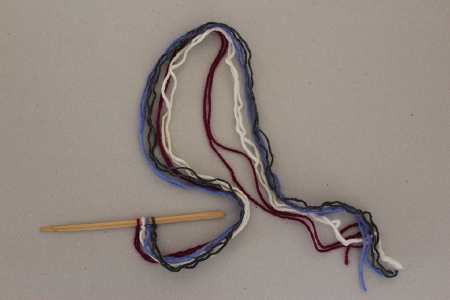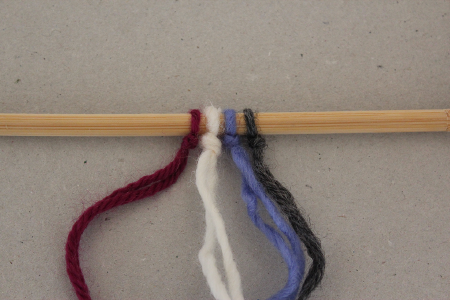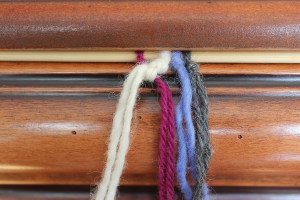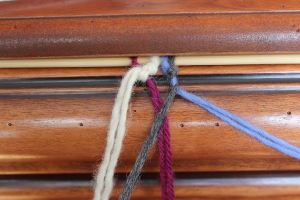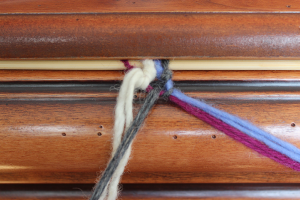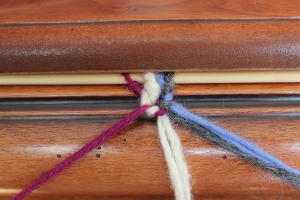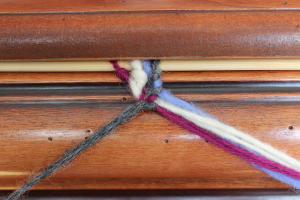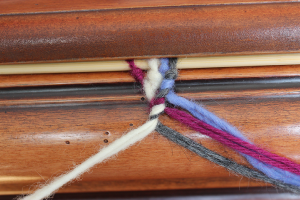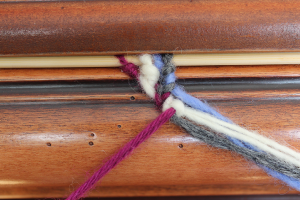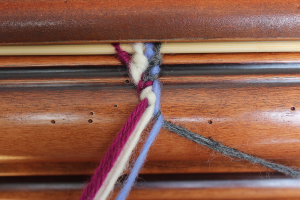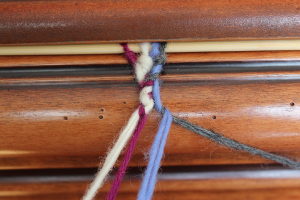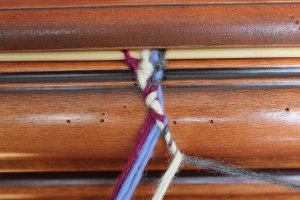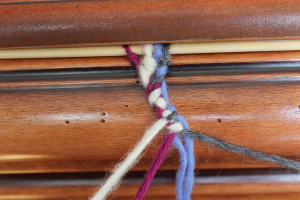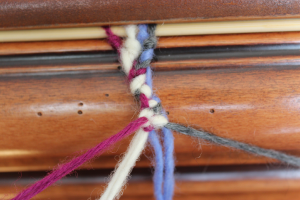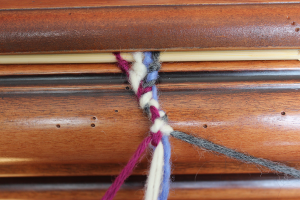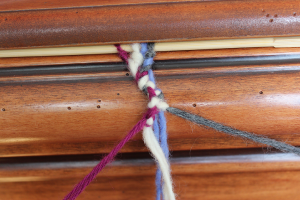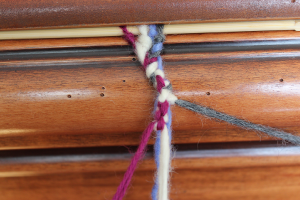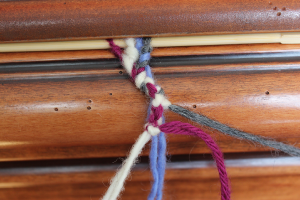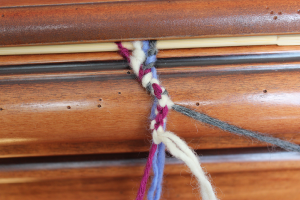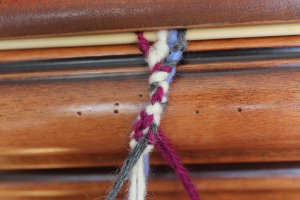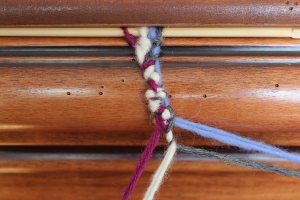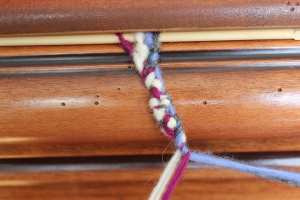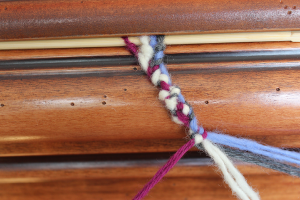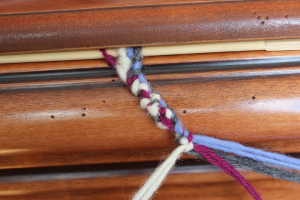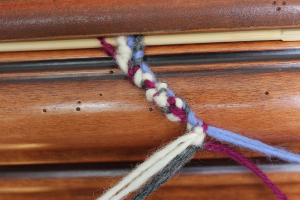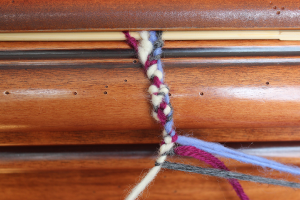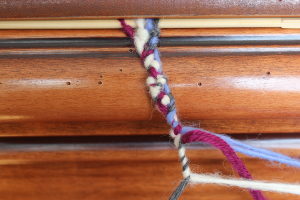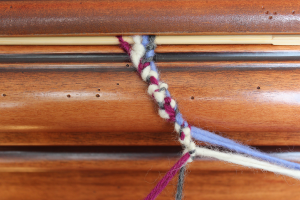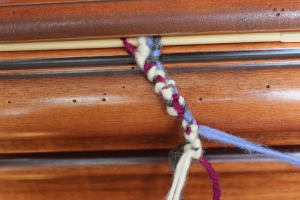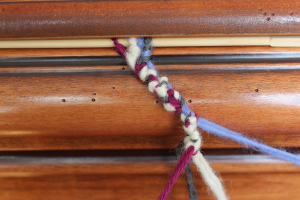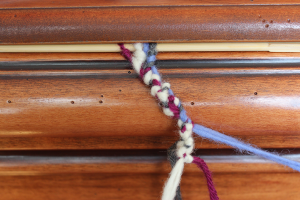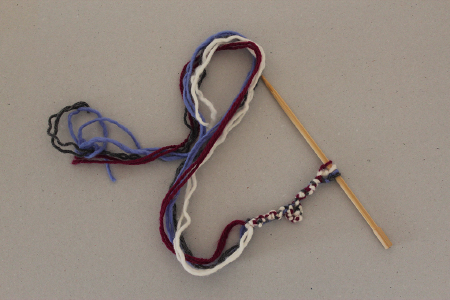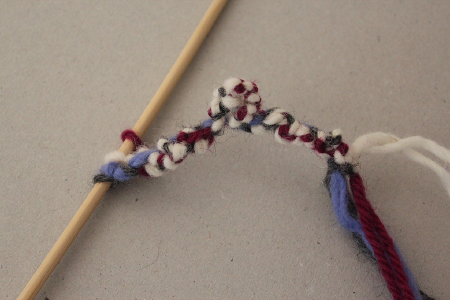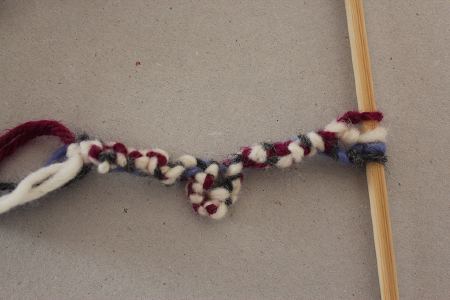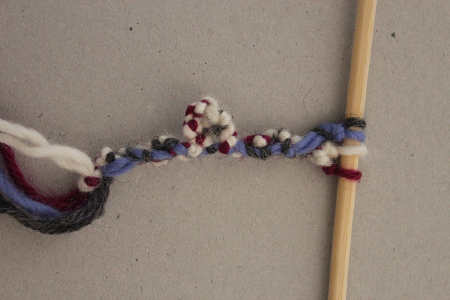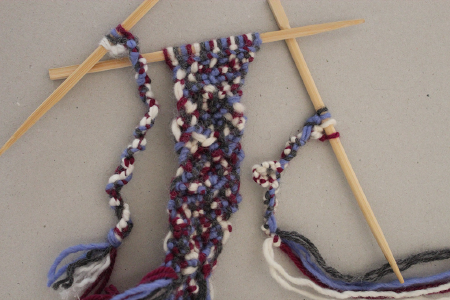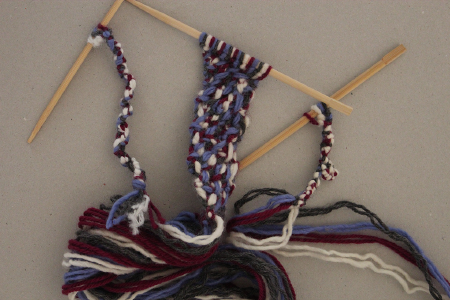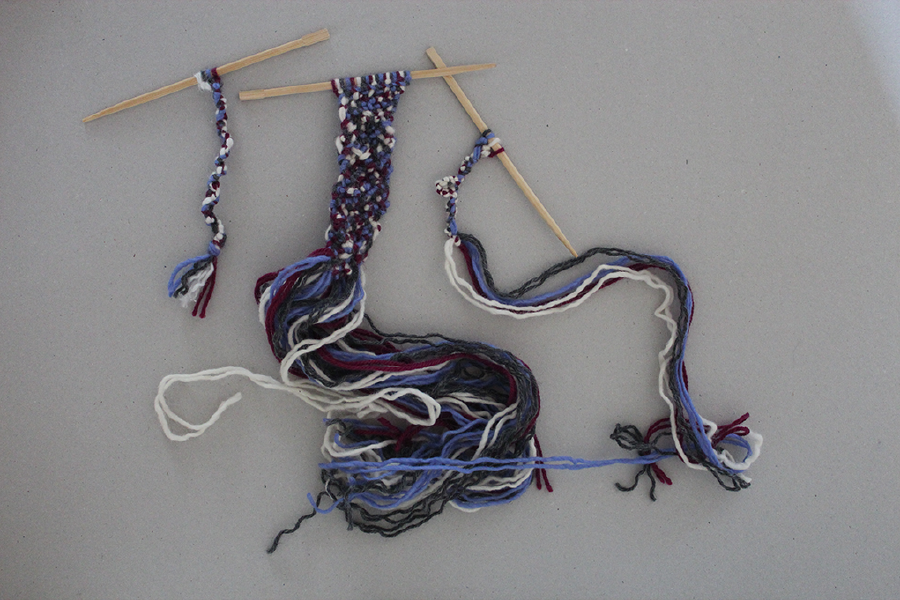hello here is my github Profile page
BRAIDING THE CONWAY'S GAME OF LIFE
The Research's Intentions
My interest in the game of life as well as the cellular automata lies in its well determined set of rules that nevertheless, leads quickly to an unpredictable outcome, when the button start is pushed. I wonder if a textile technique may provide the same result. In theory, it may not, in the final result, as the final fabric is still and can't evolve, however, I would like to experiment a set of rules that would influence the creation process of the fabric.
For this mean, I chose to experiment this research on the braiding technique that I already experimented during the courses. Hand braiding offered me a two dimension freedom, where I could try with my own hands different way to make interactions between the threads. On the other hand, this technique also has the disadvantage to be only bi-directional unlike the Conway's Game of life.
Those 3 pictures represent an evolution of a regular braiding process as the twist of the threads are being more and more exaggerated.
This research aims to transcript in a braiding technique the rules and evolutions of a Conway's Game of life. As the set rules is simply decided, the user playing with the game of life may not be able to fully predict the outcome of its game. In the same way, I would like to create some braiding rules that would be likely to create an unpredictable pattern based on each different initial rule.
First Braiding, Create Braiding Rules
The Braiding process
My first research with the braiding, is meant to randomly create a set of rules unknowing what kind of pattern would be generated, and then, arrange them in order to make a well holding braiding, in any braiding scenario.
A regular braiding technic twists the threads in a clever way so that they are maintained together. However, in my case, I need a braiding process that would hold together even if the brading rules are a little chaotic. For this means, I decided to introduce some knots in the brading I was experimenting.
Here is the first set of rules of the experimental braiding
Initial rules
- blue and red thread meet: twist them 3 times
- blue and grey thread meet: twist them 3 times
- blue and white thread meet: do nothing
- red and grey thread meet: make 1 knot
- red and white thread meet: make 2 knots
- grey and white thread meet: make 1 twist
During the braiding process, I figured out the set of rules were not precise enough, so I added extra rules to structure the braiding:
- always begin from the right to the left
- blue and white thread meet: do nothing, the thread on the right goes over the other and ignore it.
- when a knot is needed, even if the knot make the right thread go back to it's original position, force it to go left
- when a twist is needed, try to make an effective twist that will pull the structure get together, with the right thread beginning at the top of the twist, which means the twist is anti-clockwise
the rules changed into :
Modified rules
- always begin from the right to the left
- blue and red thread meet: twist them 3 times with the right thread beginning at the top of the twist, which means the twist is anti-clockwise
- blue and grey thread meet: twist them 3 times with the right thread beginning at the top of the twist, which means the twist is anti-clockwise
- blue and white thread meet: do nothing, the thread on the right goes over the other and ignore it.
- red and grey thread meet: make 1 knot, even if the knot make the right thread goes back to it original position, force it to go left
- red and white thread meet: make 1 knot, even if the knot make the right thread goes back to it's original position, force it to go left
- grey and white thread meet: make 1 twist with the right thread beginning at the top of the twist, which means the twist is anti-clockwise
In those pictures you may observe how the braiding is getting more and more regular as I specify the rules and get use to the braiding. The more I proceeded the braiding, the more I got use to the rules, and manage to figure out the right pressure needed in order to make a regular pattern.
Second Brading, Validate the Braiding Rules
A test on a bigger brading
With those new rules and a practice on a small braiding, I still needed to test the process again on a bigger scale. The second braiding was done with 20 threads of the 4 colors I used for the previous braiding. In this way, I could keep the previous rules I was now used to, in order to be more efficient. I also decided the positions of each color to, at least inicially, separate the knotting configuration from the twisting one, to attempt to create a more fluid braiding.
During this braiding, i discovered other lack in the rules as the number of threads and the braiding was more dense:
- During a knot, the thread on the right will be place up the left one
- When two same colour meets: do nothing, the thread on the right goes under the other and ignore it.
the rules changed into :
Modified rules
- always begin from the right to the left
- When two same colour meets: do nothing, the thread on the right go under the other and ignore it.
- blue and red thread meet: twist them 3 times with the right thread beginning at the top of the twist, which means the twist is anti-clockwise
- blue and grey thread meet: twist them 3 times with the right thread beginning at the top of the twist, which means the twist is anti-clockwise
- blue and white thread meet: do nothing, the thread on the right goes over the other and ignore it.
- red and grey thread meet: make 1 knot with the thread on the right will be placed over the left one. Even if the knot makes the right thread goes back to it's original position, force it to go left
- red and white thread meet:make 1 knot with the thread on the right will be placed over the left one. Even if the knot makes the right thread goes back to it's original position, force it to go left
- grey and white thread meet: make 1 twist with the right thread beginning at the top of the twist, which means the twist is anti-clockwise
While doing this braiding, I discovered more about the nature of change each kind of rules would engender. The twist has the tendency to make a thread more visible in a horizontal way, especially if the rule is repeated. A repetition of knots creates a compact structure that adds some thickness to the whole fabric.
When i decided to stop the braiding. I realised the two surfaces of the fabric had a distinct yet very interesting appearance. The "front" had a rather Pointillism, "dot-likely" representation whereas the "back" had a "stroke" language. This difference may be due to the meets of the same color of threads or the blue and white threads that would engender neither a knot, nor a twist, and create a pattern with no thread interaction on the "back".
Final Braiding, transcript the Conway's Game of Life rules in a braiding
Braiding a Glider
The next braiding is meant to transcribe the Conway' game of life rules into the braiding. Here are the rules of the Conway's Game of life
The Rules of the Game of Life:
- Death. If a cell is alive, it will die under the following circumstances.
Overpopulation: If the cell has four or more alive neighbors, it dies.
Loneliness: If the cell has one or fewer alive neighbors, it dies.
- Birth. If a cell is dead, it will come to life if it has exactly three alive neighbors (no more, no less).
- Stasis. In all other cases, the cell state does not change. To be thorough, let’s describe those scenarios.
Staying Alive: If a cell is alive and has exactly two or three live neighbors, it stays alive.
Staying Dead: If a cell is dead and has anything other than three live neighbors, it stays dead.[1]
To transcript the Game of Life rules into braiding is complicated because the braiding evolves in 2 directions, from right to left, going down the threads, while the Game of Life evolve in the meantime into 4 directions. This is the reason why I decided to dismantle the movement of a simple Game of Life's piece in order to transcript it into the braiding.
The small movement i choose is the glider. It is a pattern that travels across the game of life space without disapearing.
Final rules
- always begin from the right to the left
- Overpopulation: If the cell has four or more alive neighbours, it dies = blue and red thread meet: twist them 3 times with the right thread beginning at the top of the twist, which means the twist is anti-clockwise
- Loneliness: If the cell has one or fewer alive neighbours, it dies = blue and grey thread meet: twist them 3 times with the right thread beginning at the top of the twist, which means the twist is anti-clockwise
- Birth. If a cell is dead, it will come to life if it has exactly three alive neighbours (no more, no less) = red and grey thread meet: make 1 knot, the thread on the right will be placed over the left one. Even if the knot make the right thread go back to it original position, force it to go left
- Staying Dead: If a cell is dead and has anything other than three live neighbours, it stays dead = red and white thread meet:make 1 knot, the thread on the right will be placed over the left one. Even if the knot make the right thread go back to it original position, force it to go left
- Staying Alive: If a cell is alive and has exactly two or three live neighbours, it stays alive = grey and white thread meet: make 1 twist with the right thread begining on the top of the twist, which means the twist is anti-clockwise
Unlike the other braidings, the Glider Brading is very irregular because each interaction of the threads is unique.
Because of the braiding's irregularities, the Glider Brading has a curious pattern that creates a 3 dimentional shape. In a way, the lack of spacial freedom of the braiding compared to the Conway's Game of Life is compensated by the final shape of the braiding as the result of knots and twists interactions.
- ↑ The Nature of Code by Daniel Shiffman http://natureofcode.com/book/chapter-7-cellular-automata/
